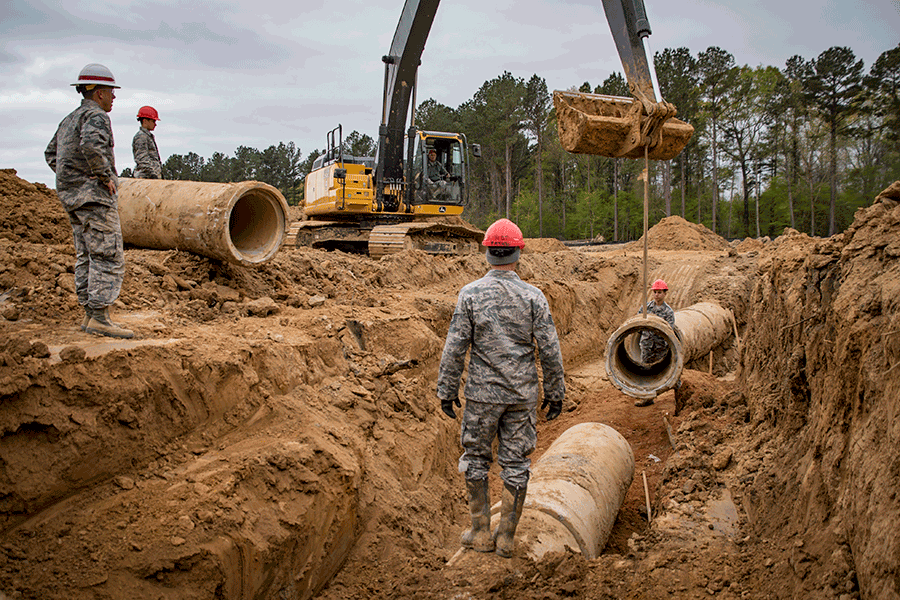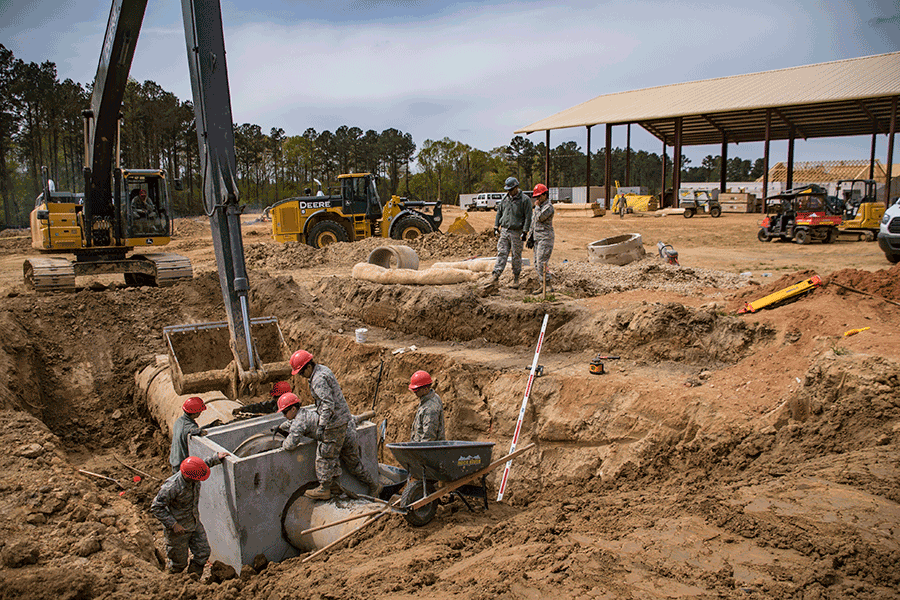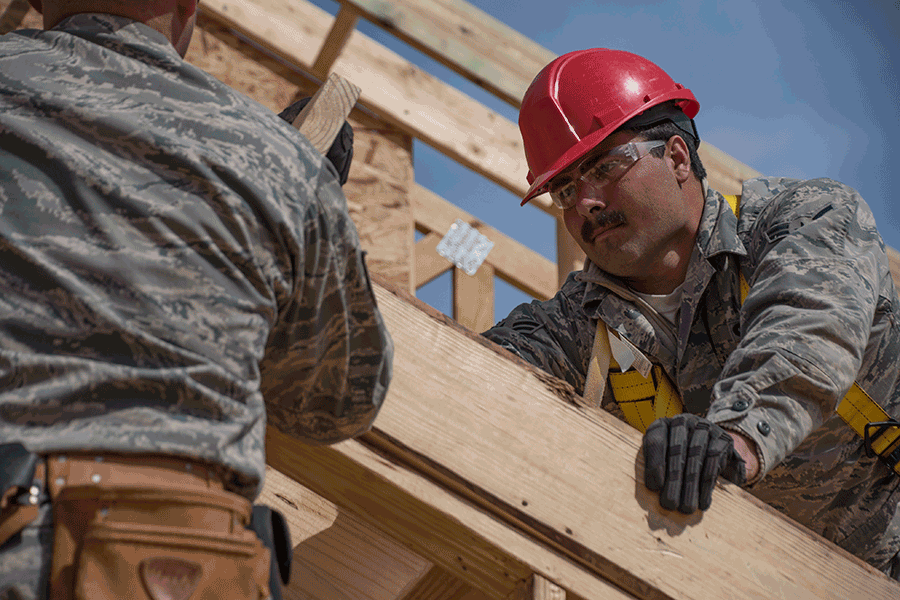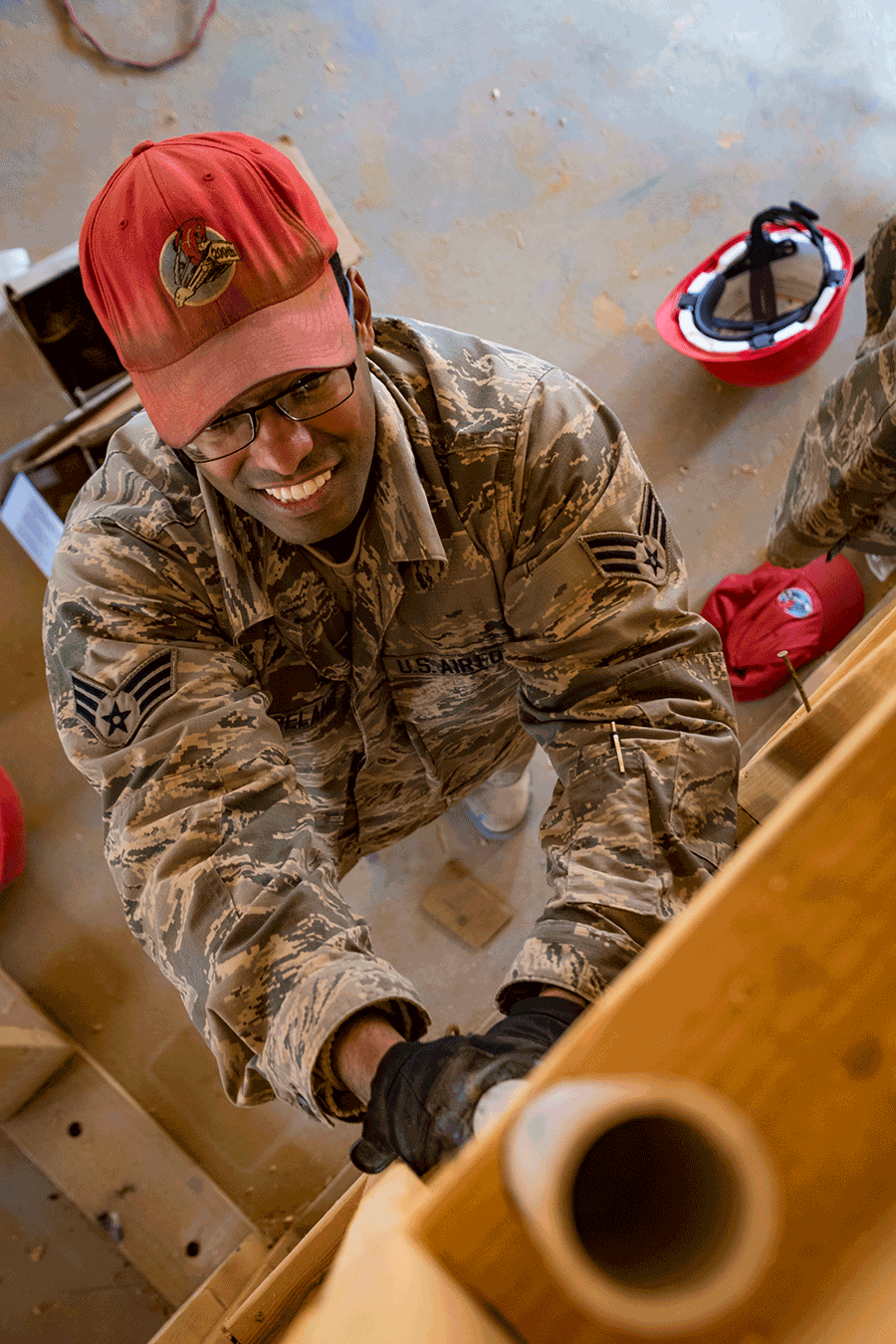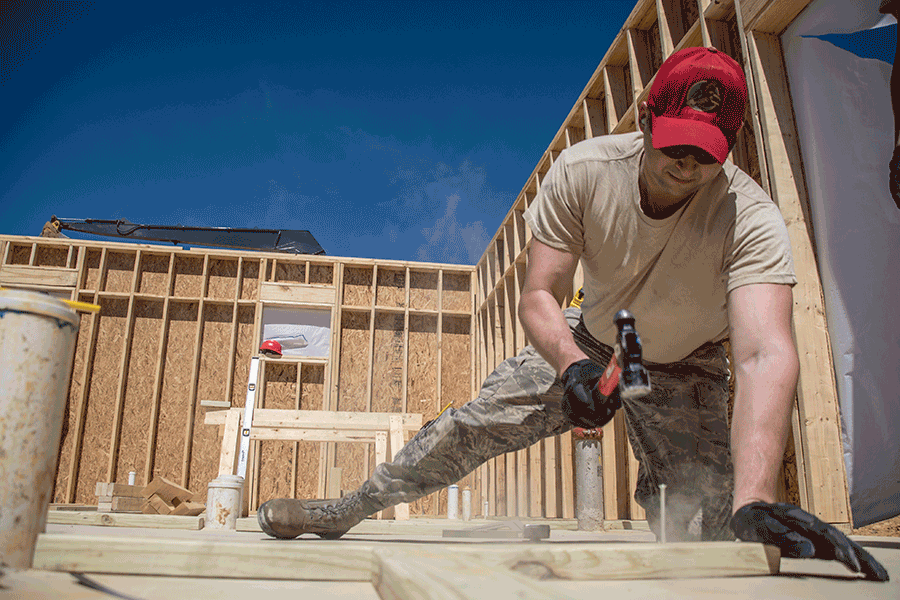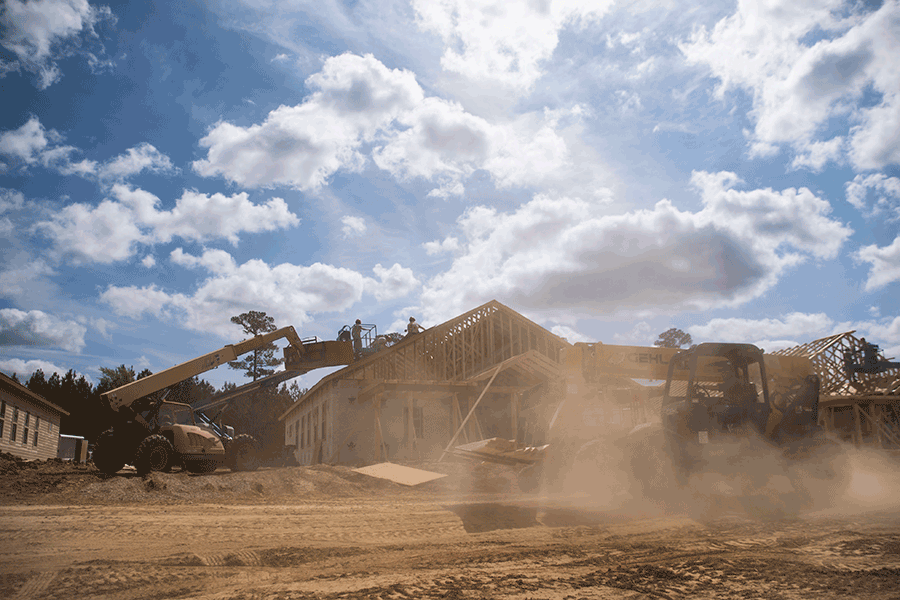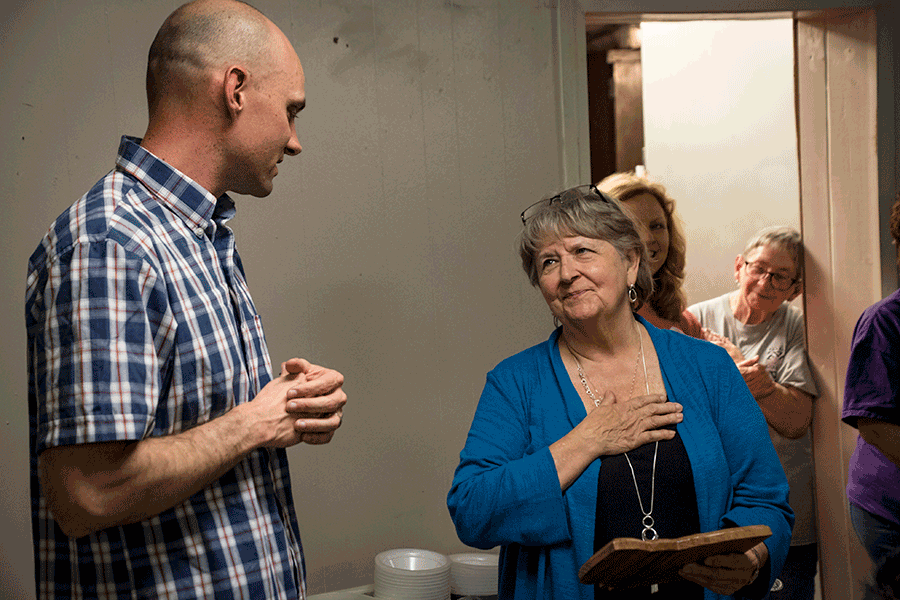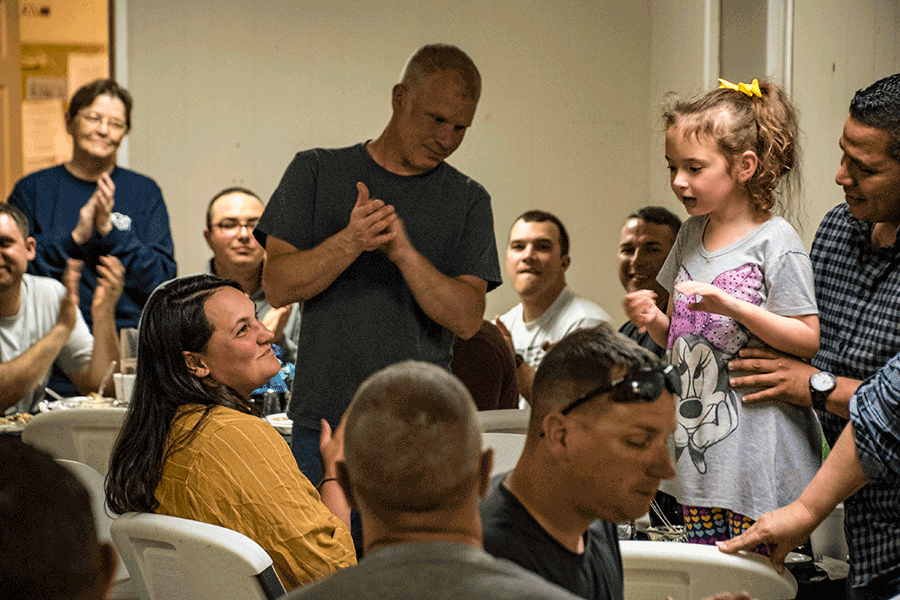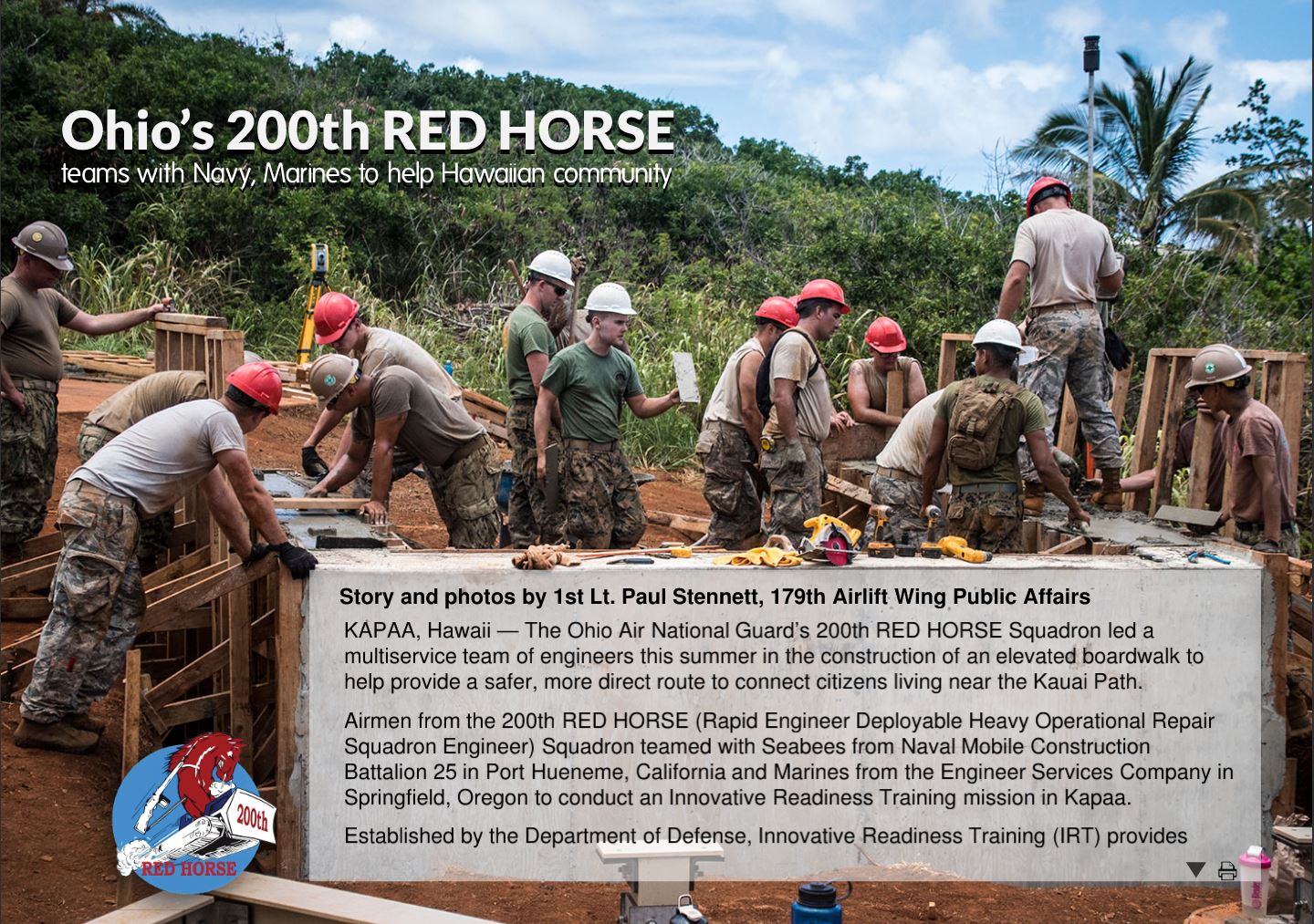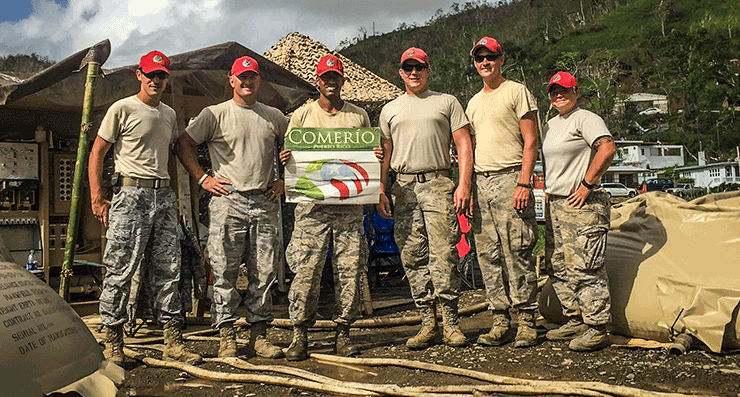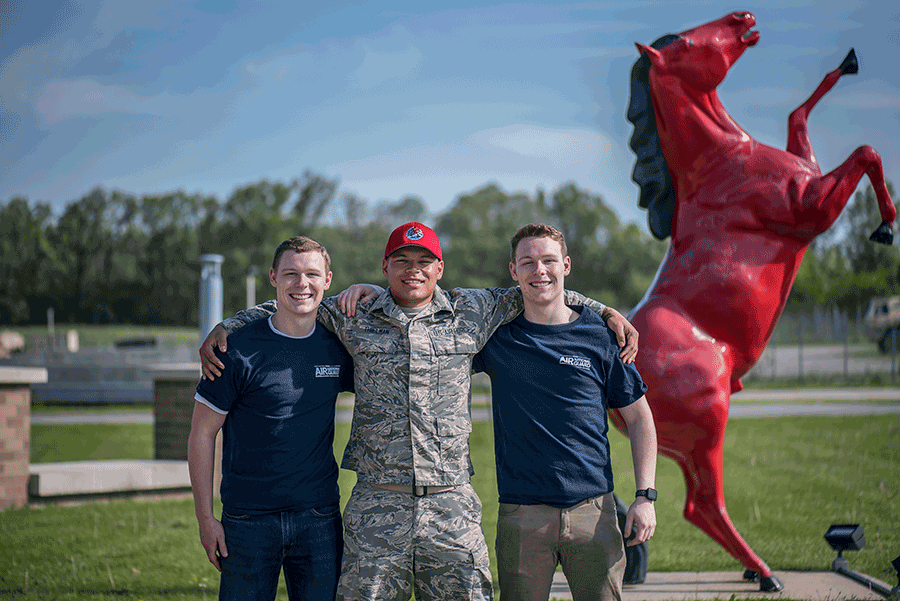200th RED HORSE at tip of the spear for second year of Camp Kamassa project in Mississippi
Story by Tech. Sgt. Joseph Harwood, 179th Airlift Wing Public Affairs
CRYSTAL SPRINGS, Miss. (06/25/19)
The 200th RED HORSE Squadron recently assisted in the construction of Mississippi’s first fully accessible year-round camp facility for children and adults with serious illnesses, physical and mental challenges, and other special needs, through the Department of Defense’s Innovative Readiness Training (IRT) Program.
Capt. Ashley Klase, an engineer with the 200th RED HORSE (which stands for Rapid Engineer Deployable Heavy Operational Repair Squadron Engineer), said over 80 Airmen from the unit — based out of Camp Perry Joint Training Center near Port Clinton, Ohio, with a separate detachment in Mansfield, Ohio — split into two rotations this spring in an effort to support the ongoing project.
Klase said they were there “to work on the vertical structures, building cabins and excavating for roads and a bridge. Our 43 Airmen accomplished a lot over two short weeks and we feel privileged to be a part of something that will affect the lives of thousands of children and their families in the future.”
IRT is a Department of Defense military training opportunity, exclusive to the U.S. and its territories, that provides unique, nontraditional training opportunities to military units to increase deployment readiness. Simultaneously, IRT provides key services with lasting benefits to American communities.
IRT projects are beneficial to service members by providing hands-on, real-world training to improve readiness to operate in contingency environments around the globe. Throughout the duration of their two rotations, 200th RED HORSE (RHS) members completed the construction of eight cabins and a multi-use building (to include electrical and plumbing installation and connections); the repair, improvement and continuation of existing roadways; bridge abutments and installation of a 90-foot rail car bridge.
The 200th RHS volunteered to take the first two rotations of this massive project that will continue into the fall, with plans for the IRT involvement to be completed in 2020. After the 200th RHS, other engineer units from the Air National Guard, Air Force Reserve and Marine Corps Reserve, representing 13 states, were scheduled to take their turns descending on the small community of Crystal Springs, all in a joint effort to see the dream of Camp Kamassa come to life.
Chief Master Sgt. Stacy Gilman, of the 560th RHS at Joint Base Charleston, South Carolina, has been assigned as the senior noncommissioned officer in charge for the duration of the planned three-year, $26 million IRT project. “This is the start of year two of the three-year project,” Gilman said. “The 200th RED HORSE has done an outstanding job providing the upright construction for the cabins here and building onto the infrastructure that was started here last year.”
While offering valuable military training for all units involved, the project also supports a locally critical nonprofit organization, Mississippi’s Toughest Kids Foundation.
During 2008, a group of longtime volunteers for Camp Rainbow, a summer camp for pediatric cancer patients, began discussing the need for the construction of a camping facility for chronically ill children in the state of Mississippi. The idea was to build a “super” camp designed uniquely for children with all special needs. So, began the dream of Camp Kamassa.
Mary Kitchens, founder of Mississippi’s Toughest Kids Foundation, expressed her gratitude to 200th RHS Airmen gathered for a dinner organized by the supportive local community.
“Having you all here is making it possible for children all over the state and Louisiana — we’re closer to New Orleans where the children’s hospital is, than the camps that are being offered in Louisiana — so we’ll be drawing from Louisiana and all over the state. There will be thousands of children who are looking forward to coming to this camp; they’ll be running around or being pushed around and just having a good time,” Kitchens said. “You’re really doing something that’s eternal … something that’s going to last forever, because this camp is going to last forever. It’s going to be such a blessing to the lives of children, as well as their parents and their families and I hope it’s a blessing to you, too, for you to be a part of it because you’re certainly blessing us by being here and we’re very thankful and want to make sure you know that.”
Mississippi has never had a camp devoted solely to and designed specifically for children with special needs. Although there are many groups around the state that have worked to hold camps for special needs children in the past, they often lacked the necessary accommodations.
Plans are for Camp Kamassa to be used by thousands of campers with various illnesses and challenges including, but not limited to: asthma, spina bifida, cancer, HIV, muscular dystrophy, diabetes, brain injuries, hemophilia, Tourette syndrome, autism, transplant recipients, children in foster care, arthritis, visual and hearing impairments, developmental disabilities, bereavement, sickle cell disease, Celiac disease, Crohn’s disease and colitis.
Often, traditional camp facilities don’t have an infirmary, making the job of the staff nurses very difficult. Usually there aren’t more than one or two toilet stalls or showers large enough for a child needing assistance. Other camps lack sidewalks connecting all the buildings and leading to activities, making it hard for children in wheelchairs, those using walkers or the visually-impaired to move around camp. Pool access can be a serious challenge to some. The service members assigned to the project are working with MTKF to accommodate the special design needs of the cabins.
Tech. Sgt. Justin Bell, the IRT project manager for the 200th RHS, said the project had progressed significantly and expressed gratitude for the opportunity to be a part of the cause.
“We are honored to be a part of this project, we believe in Mississippi’s Toughest Kids (Foundation’s) vision for this camp and we are doing everything we can in our power to meet the needs of these kids,” Bell said. “Ensuring things are ADA (Americans with Disabilities Act) compliant, such as ensuring the proper width of door openings and handicap-accessible bathrooms, these will be custom cabins specifically intended to meet their needs.”
Added Senior Airman Chase Gardull: “This project has been not only eye-opening for me, but humbling and very rewarding. Seeing the vertical construction going up and (that) we have a purpose for what we’re doing, especially meeting some of these kids that will be benefiting from it, gives you an extra boost of confidence and motivation to work these long, hard days for something bigger than ourselves.”

